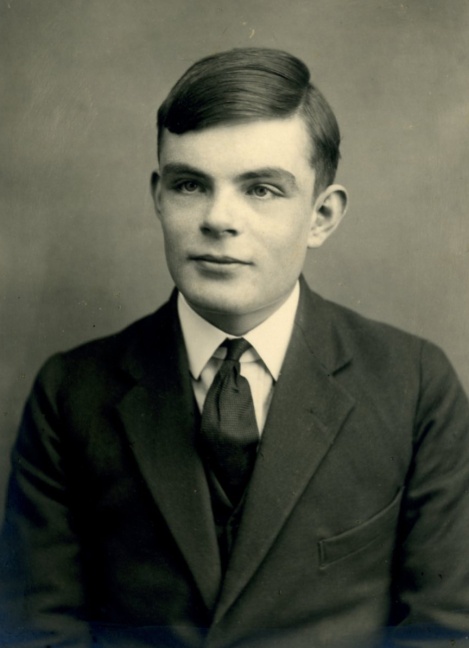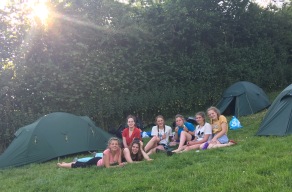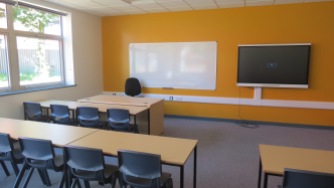
Alan Turing at age 16 (1928)
It is with great pride that we have named our new Computing, Business Studies and Social Sciences building The Alan Turing Building, in honour of the great war hero and father of modern computer science. Alan Turing died on this day, June 7th, in 1954.
Who was Alan Turing?
Alan Turing was born on 23rd June 1912, and is widely credited as the founder of computer science. He is best known for his work at Bletchley Park in the Second World War, where he and his team of codebreakers successfully cracked the Enigma Code used by Nazi Germany to communicate with its Navy. His work is thought to have shortened the war by two to four years, saving between 14 and 21 million lives in the process.
Alan Turing was educated at Sherborne School in Dorset, and later at King’s College, Cambridge. Whilst at Cambridge, Turing came across an unsolved mathematical problem – the question of Decidability, the Entscheidungsproblem. Turing set out to work out whether there could be a definite method by which it could be decided whether any mathematical assertion was provable. In order to answer this question, he came up with the idea of the Universal Turing Machine – a theoretical machine which would follow the instructions laid out by a “programmer” in order to complete mathematical tasks. In other words, he invented the idea of a computer.

A German Enigma cipher machine (source)
It was this theory which was turned into practice at Bletchley Park. He created a machine called “Victory” in the Spring of 1940 which was able to crack the German military code-machine, Enigma. By 1943, Turing and his team were cracking a total of 84,000 different Enigma messages every month – two messages every minute. Every time the Germans introduced a new code or cipher, Turing’s machines were able to crack it.

Turing’s Bombe computer, rebuilt at Bletchley Park

Rear view of Turing’s Bombe computer
Turing’s Bombe computer, rebuilt at Bletchley Park (source)
Following the war, Turing worked on developing his code-breaking machines into universal computers, paving the way for the technology revolution which has transformed all of our lives. But nobody at the time knew of the contribution that Alan Turing had made to the end of the war, as his work was classified top secret until 1974.
Turing had been openly gay since his time at Cambridge. However, homosexuality was a criminal offence at the time, and he was arrested for gross indecency and came to trial in March 1952. He did not deny his actions or defend himself; he said he saw no wrong in being gay, and told the police he believed homosexuality should be legalised. Rather than go to prison, he accepted a form of “chemical castration” – a year-long programme of hormone injections designed to suppress his sexuality. On 8th June 1954 his body was found; he had taken cyanide poison. The coroner’s verdict was suicide.
Homosexuality was decriminalised in 1967, and in 2013 Alan Turing received a royal pardon, removing his criminal record. He is now widely recognised as a war hero and a pioneer in Mathematics and Computing.
Why the Alan Turing Building?

The Alan Turing Building at Churchill Academy & Sixth Form, opened June 2017
Turing represents the best of British innovation, using his expertise in mathematics to solve unsolvable problems, save millions of lives, and change the face of technology. He also represents equality, refusing to hide or be ashamed of who he really was, no matter what other people thought. In both ways, Alan Turing has changed our society for the better. We hope that the students educated in this building, dedicated to Computing – the subject he invented – along with Business Studies and the Social Sciences – will embody the same spirit of innovation and equality, and go on as he did to make the world a better place.
Inside the Alan Turing Building
These photographs, taken during the final fit-out of the Alan Turing Building, show the Smarter Spaces colour scheme designed by our students. This light and airy space, equipped with brand new computers and interactive displays, will be a superb facility for our students today and far into the future and, we hope, a fitting tribute to someone whose story we think everyone should know.




































